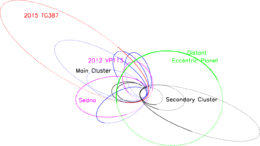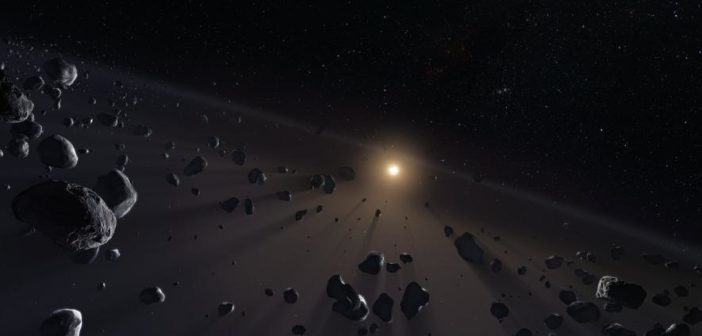Editor’s note: In these last two weeks of 2019, we’ll be looking at a few selections that we haven’t yet discussed on AAS Nova from among the most-downloaded papers published in AAS journals this year. The usual posting schedule will resume in January.
Shepherding in a Self-gravitating Disk of Trans-Neptunian Objects
Published January 2019
Main takeaway:
Scientists Antranik Sefilian (University of Cambridge, UK) and Jihad Touma (American University of Beirut, Lebanon) have demonstrated that the odd clustering of orbits we observe in the outer reaches of our solar system could be explained by the collective gravity of a large disk of trans-Neptunian objects — small, icy bodies beyond the orbit of Neptune.
Why it’s interesting:

Schematic showing the alignment of the orbits of detached extreme trans-Neptunian objects and the proposed orbit of a hypothetical unseen planet (in green). A new study proposes an alternative to this “Planet Nine”. [Sheppard et al. 2019]
What this explanation looks like:
According to the authors, a disk of icy Kuiper-belt bodies roughly a few to ten times the mass of the Earth can, in combination with the gravitational tugs of our solar system’s known planets, shepherd the bodies in the outer solar system onto their observed orbits.
Is such a disk realistic? While previous estimates of the total mass of objects in the Kuiper belt weigh in at only around only a tenth of an Earth mass, it’s difficult to obtain an accurate measure due to our location in the plane of the solar system. There’s a chance there’s a lot more mass out there that we’re missing, and those small, icy bodies could shape the outer reaches of our solar system without the need for a ninth planet.
Citation
Antranik A. Sefilian and Jihad R. Touma 2019 AJ 157 59. doi:10.3847/1538-3881/aaf0fc

1 Comment
Pingback: 1,000 AAS Nova Highlights and Five Years of Astronomy